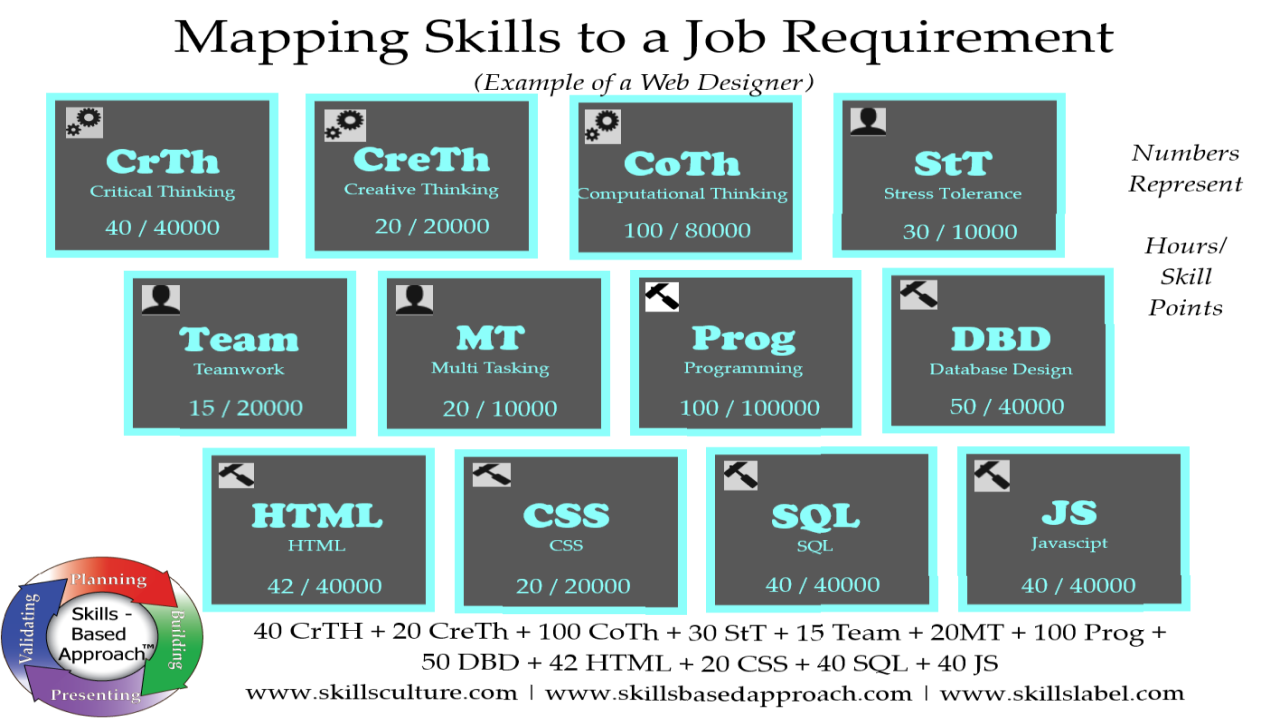One proposal of the patented learning labels system for the management and tracking of skills is to take a more scientific method in not only mapping skills to jobs, but also quantifying them. I use the analogy:
Let’s map skills and Skill Points to jobs, like atoms and coefficients to molecules
Sometimes I field a criticism this is impossible, one is rooted in the Laws of Physics and the other is not; so let me preface that there may be ranges, fluctuations, and changing demands for a job definition. But the requirement does not need to be nearly as precise.
The primary goal of this job mapping is to create more agile learning and training pathways, where learners and workers pivot – necessitated by new or a different job requirement. Probably the answer to the AI replacing jobs.
To build these pathways, learning labels system includes three tiered labels – all based on skills and Skill Points: learning (tasks, experiences, and activities), course (online, classroom, MOOCs, training modules), and job labels.
Defining learning and training on such a granular level should also provide a better understanding how skills are learned and acquired. This is empowering to a learner because it gives them an understanding of their actionable skills. As I stated in the last article, the apps provide functionality to setup skill sets daily or weekly. This is also empowering to the practitioner – teaching to skills (and jobs) is more practical than simply subjects.
Learn how to incorporate the learning labels system in your curriculum, training, or workforce development from the website www.skillslabel.com or contact me for a free consultation ryan@skillslabel.com
